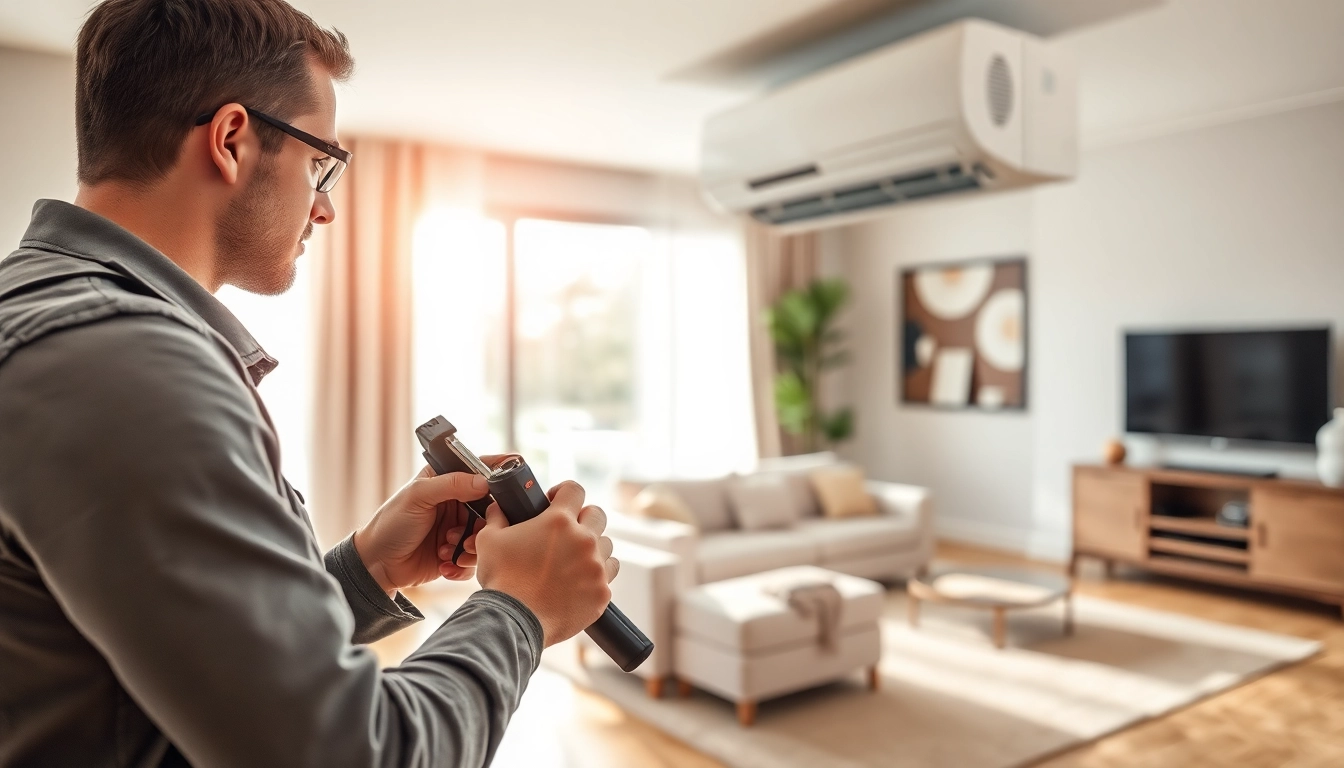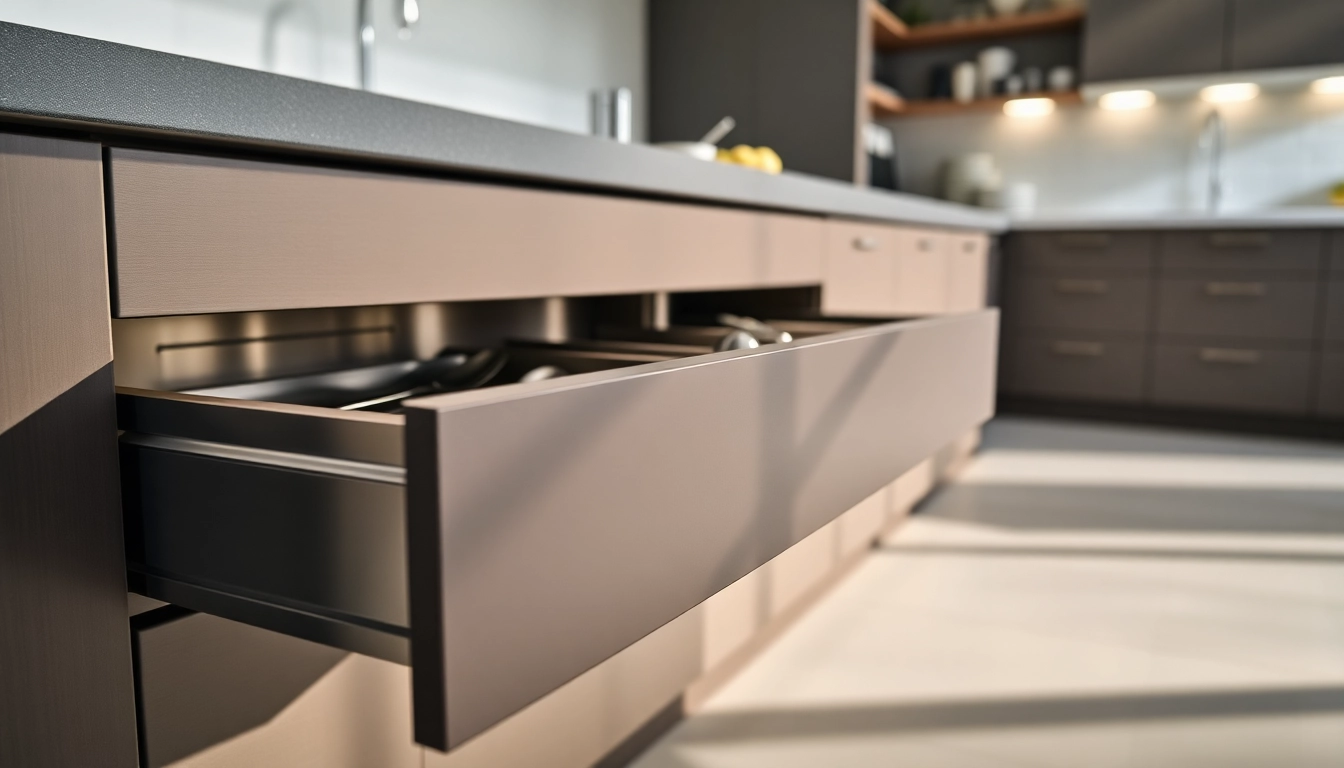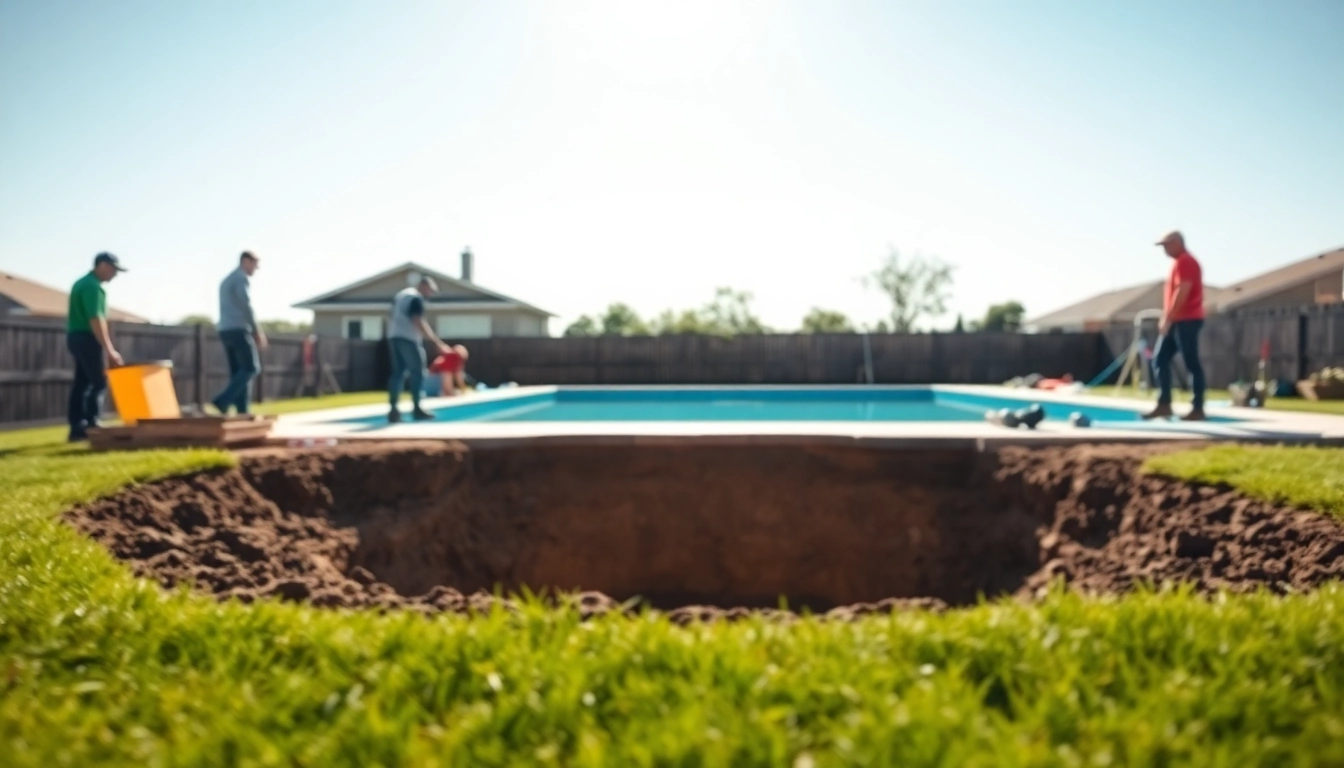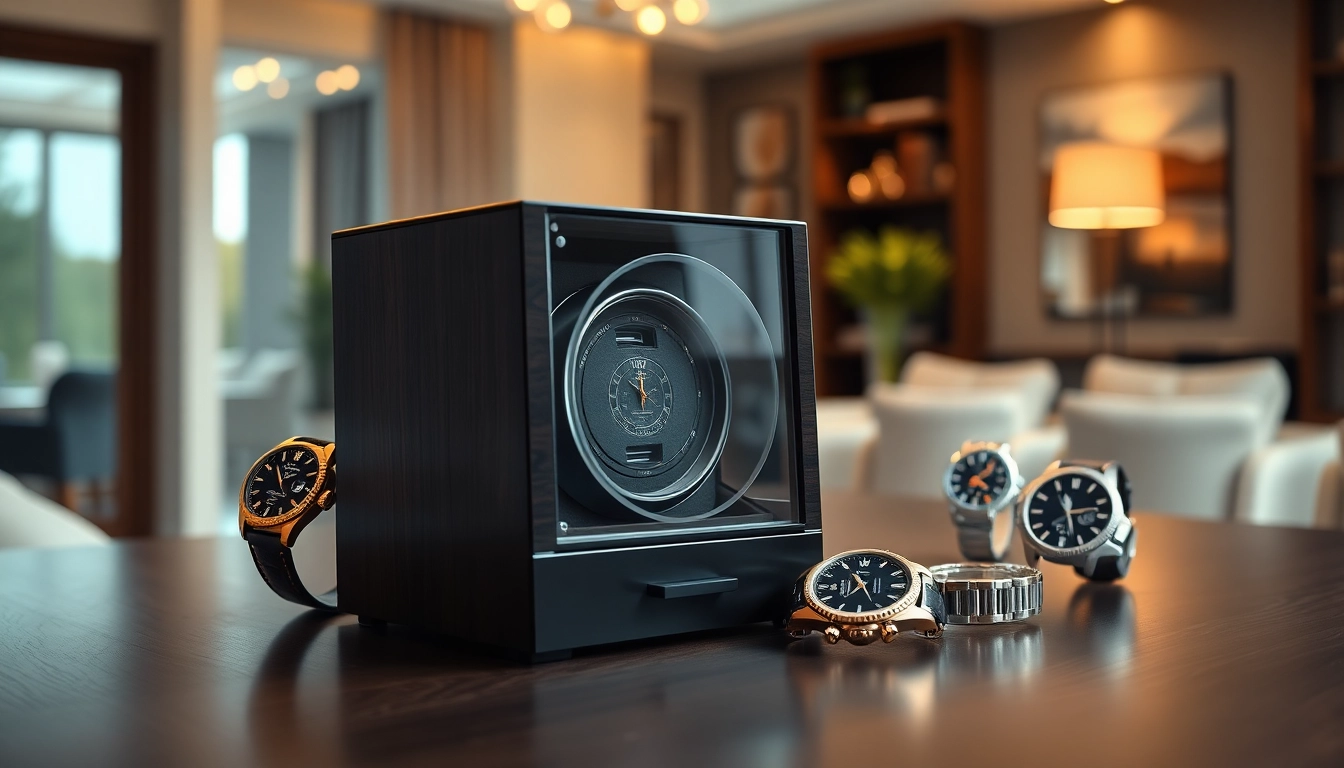Understanding Ductless Mini Split Systems
What is a Ductless Mini Split System?
A ductless mini split system is an innovative heating and cooling solution designed to provide specific climate control for individual rooms or zones in a building. Unlike traditional systems that rely on ducts to distribute air, mini splits use a split design that comprises an outdoor compressor unit and one or more indoor air handling units. This configuration allows for greater flexibility and efficiency in managing indoor temperatures, making them an increasingly popular choice among homeowners and businesses alike.
Advantages of Ductless Mini Split Installation Nashville
Opting for a Ductless mini split installation Nashville offers several notable benefits. First and foremost, these systems are highly energy efficient. They provide targeted cooling and heating, meaning you can heat or cool only the areas in use, which can significantly reduce energy consumption. Additionally, since they do not require the installation of ductwork, they can be integrated into existing homes or new constructions with minimal disruption to the living space.
Another advantage is the ability for zoned temperature control. Each indoor unit can be set to a different temperature, providing personalized comfort for each room or zone. This feature is especially beneficial in multi-story homes or in apartments, where different occupants may have varying temperature preferences. Finally, ductless systems tend to have a lower installation cost than traditional HVAC systems when factoring in ductwork installation and associated labor.
How Ductless Systems Work
Ductless mini split systems operate through a simple yet effective mechanism. The outdoor unit contains a compressor and a fan, which work together to extract heat from the outside air. This heat is then transferred to the indoor air handling units through refrigerant lines. The indoor units contain evaporator coils that absorb the heat from the refrigerant, allowing the cooler air to circulate back into the room. During warmer months, the process reverses, enabling the system to cool the indoor air. This two-way capability makes ductless systems versatile and suitable for year-round use.
Preparing for Your Ductless Mini Split Installation
Site Assessment and Preparation Tips
Before installing a ductless mini split system, conducting a thorough site assessment is crucial. This assessment involves analyzing the layout of the space, identifying potential locations for indoor and outdoor units, and considering the placement of electrical and drainage lines. It’s essential to choose locations that maximize airflow and minimize aesthetic intrusions while considering some factors like sunlight exposure and noise from the compressor.
Additionally, check the structural integrity of walls and mounting surfaces to ensure they can support the weight of the indoor units. It’s wise to prepare the installation site by clearing any obstacles and ensuring that the ground or surface for the outdoor unit is level to prevent operational issues later on.
Selecting the Right Unit for Your Home
Selecting the right ductless mini split unit involves understanding your specific heating and cooling needs. Factors to consider include the size of the area that requires climate control, the existing insulation, and the local climate conditions. Generally, the size of the unit is measured in British Thermal Units (BTUs), and it’s essential to choose a capacity that aligns with your square footage. Overly large systems can lead to temperature fluctuations, while undersized units may struggle to meet demand, thus increasing energy costs.
Consulting with HVAC professionals can help guide this decision, ensuring that you select a unit that offers optimal performance, efficiency ratings, and features that align with your comfort preferences.
Key Factors Impacting Installation Success
Several key factors can influence the success of your ductless mini split installation. Firstly, the placement of the indoor units significantly impacts airflow and efficiency. Units should be installed in central locations away from obstructions to maximize their ability to cool or heat a space effectively. Secondly, installation must ensure proper sealing of refrigerant lines and electrical connections to prevent leaks and operational failures.
Finally, the skill and experience of the installation technician play a significant role in system performance. Professional installation ensures that all components are correctly connected, calibrated, and tested for optimal operation right from the start.
The Installation Process
Step-by-Step Guide to Ductless Mini Split Installation Nashville
The installation process for a ductless mini split system typically involves several steps:
- Site Preparation: As mentioned, prepare the installation site by clearing obstructions and ensuring structural integrity.
- Install Outdoor Unit: Position the outdoor unit on a stable platform or concrete slab and connect the power supply.
- Drill Holes for Piping: Create holes in the walls to accommodate refrigerant lines and electrical connections, ensuring that they are adequately sealed afterward.
- Install Indoor Units: Mount the indoor air handling units at the designated locations, ensuring maximum airflow and accessibility.
- Connect Lines: Properly connect refrigerant lines, drain lines, and electrical wiring between indoor and outdoor units.
- Test the System: Once everything is connected, check for leaks and ensure the system operates as intended before completing the installation.
Common Challenges During Installation
While installing a ductless mini split system usually follows a straightforward process, several common challenges may arise. Improper line installation can result in inefficient operation, leading to high energy bills or system failures. Additionally, misjudging the location of indoor units might limit airflow, leading to inconsistent temperatures across spaces. Environmental factors, such as inclement weather, may also hinder installation timelines and processes.
To mitigate these challenges, it is critical to ensure that installation is handled by experienced professionals who can accurately assess and navigate such obstacles, ensuring a smooth installation process and efficient system performance.
Safety Precautions for Technicians
Safety must remain a priority during the installation of ductless mini split systems. Technicians should wear appropriate personal protective equipment (PPE), including gloves and safety goggles, to protect against potential hazards. When working with electrical components, it is crucial to turn off the main power supply to avoid electric shock. Additionally, when handling refrigerants, care should be taken to follow EPA regulations and safety protocols to prevent leaks or exposure.
Regular safety training and adherence to industry standards can further enhance the safety of the installation process, ensuring that both technicians and homeowners remain protected.
Post-Installation Care and Maintenance
Routine Maintenance Tips for Ductless Systems
To ensure longevity and optimal performance of your ductless mini split system, routine maintenance is key. Homeowners should regularly clean or replace reusable air filters, ideally every month, to enhance airflow and efficiency. Inspecting and cleaning the outdoor unit for debris, such as leaves or dirt, will also promote proper airflow.
A qualified technician should perform an annual inspection, which typically includes cleaning the evaporator and condenser coils, checking for refrigerant levels, and testing the electrical components. This proactive approach ensures that the system operates efficiently and can prevent costly repairs down the line.
Signs Your System Needs Professional Attention
Several signs indicate that your ductless mini split system may require professional attention. Unusual noises, such as banging or hissing, can signify potential mechanical problems or refrigerant leaks. Additionally, if you notice inconsistent temperatures across different zones or noticeable spikes in your energy bill without a change in usage, it may be time to call a technician.
Visual signs like water leaks around the indoor unit or excessive ice buildup on the outdoor unit also warrant immediate attention, as these issues can lead to more significant damages if ignored.
Maximizing Efficiency After Installation
Maximizing the efficiency of your ductless mini split system relies on proper usage habits and regular maintenance. Setting the thermostat to a moderate temperature rather than extreme highs or lows can reduce energy consumption while maintaining comfort. Additionally, using the system’s built-in features, such as timers and sleep modes, can optimize operational hours and energy usage.
It is also beneficial to invest in smart home technology that can analyze and adjust heating and cooling based on real-time data, further enhancing efficiency and comfort throughout your living space.
Choosing the Right Professional for Installation
What to Look for in an Installer for Ductless Mini Split Installation Nashville
Choosing the right professional for your ductless mini split installation is crucial for ensuring optimal performance. Look for installers with extensive experience and industry certifications, such as NATE (North American Technician Excellence). Reviews and testimonials from previous clients can provide insight into an installer’s reputation for quality work and customer service.
Ensure that the chosen installer is well-versed in local building codes and regulations, as compliance is essential for both safety and warranty purposes.
Questions to Ask Before Hiring
Before hiring an installer, asking the right questions can help clarify their expertise and suitability for the job. Inquire about their experience with ductless mini split installations, how many installations they have completed, and if they can provide references. Understanding their warranty policies for both labor and equipment will also ensure you know the coverage you will receive. Additionally, discuss the projected timeline for the installation process and any potential challenges they foresee based on your home’s layout.
Estimating Installation Costs and Timelines
Estimating the costs and timelines associated with ductless mini split installation can vary significantly based on various factors, including the complexity of the installation, the number of units needed, and local labor rates. Typically, homeowners can expect to pay for the equipment itself, any necessary modifications to the home, and labor costs. Gathering multiple quotes from reputable installers can help gauge a reasonable budget for the project.
The time required for installation generally ranges from a few hours to a full day, depending on the system’s size and the setup’s complexity. Being informed about potential costs and timelines can help homeowners prepare accordingly and ensure a successful installation process.















Leave a Reply